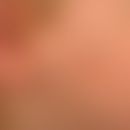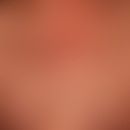Synonym(s)
DefinitionThis section has been translated automatically.
Mentzeliae cordifoliae stipites, also known as anguraté stalk, is a drug whose ingredients are used in naturopathy. The herb of the plant, the tips of the twigs and the roots are used.
IngredientsThis section has been translated automatically.
Mentzeliae cordifoliae stipites contains iridoids (mentzeloside, 5-OH-mentzeloside), flavonoids (quercetin, rutin, hyperoside, kaempferol), bitter compounds, mucilages, coumarins, essential oil, cinnamic acid derivatives(caffeic acid, ferulic acid, chlorogenic acid) beta-sitosterol
You might also be interested in
EffectsThis section has been translated automatically.
Anguraté stalks have spasmolytic, antiphlogistic and mucosaprotective effects and may also regulate hyper- and sub-acidity of the stomach and in dyspeptic complaints.
The effect of the anguraté stalks is achieved by synergetic effects. Iridoids have an anti-inflammatory effect and stimulate the secretion of gastric juice. Flavonoids have an anti-inflammatory effect and are also spasmolytic, antioxidant and help to stabilise cell membranes.
Mucilages form a protective film over the stomach lining and thus have an anti-irritant effect. Mucilages also act as a buffer and ensure an increase in gastric juice secretion in the case of sub-acidity and a decrease in the case of hyperacidity.
Field of application/useThis section has been translated automatically.
Extracts of anguraté stems are used to support gastrointestinal functions. They are also used in cases of existing gastritis, dyspepsia, bloating and digestive disorders as well as nervous stomach and intestinal complaints.
DosageThis section has been translated automatically.
Daily dose: 9 g of the drug. As tea infusion 3 times daily 2 filter bags; when the tea is boiled 3 times daily 1 tablespoon of the cut drug.
InteractionsThis section has been translated automatically.
has not been investigated to date.
LiteratureThis section has been translated automatically.
- Villegas LF et al. (1997) Evaluation of the wound-healing activity of selected traditional medicinal plants from Perú. J Ethnopharmacol 55:193-200.
- Schilcher H (2016) Leitfaden Phytotherapie, Urban & Fischer Verlag Munich, p. 54 f.
- Blaschek W (2015) Wichtl-Teedrogens and phytopharmaceuticals. A handbook for practice. Wissenschaftliche Verlagsgesellschaft Munich. S 427-428
- Bucar F et al. (1998) Studies on the anti-inflammatory principle of Mentzelia chilensis. Phytotherapy research, 12: 275-278 https://doi.org/10.1002/(SICI)1099-1573(199806)12:4<275::AID-PTR295>3.0.CO;2-I
- https://angurate.de/heilpflanze-angurate-neu.html




